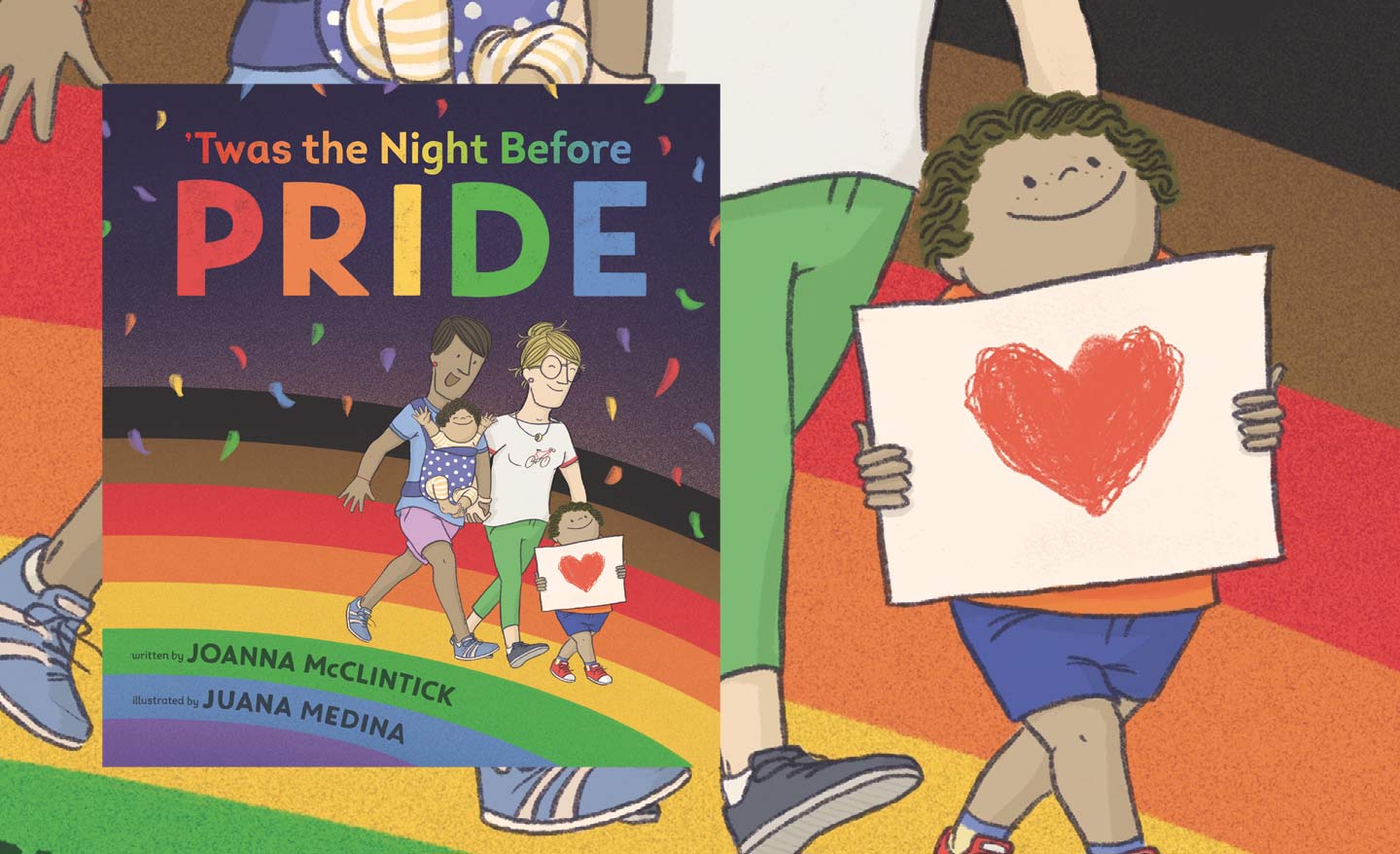’Twas the Night Before Pride
Joanna McClintick ’07, a licensed clinical social worker, has authored ’Twas the Night Before Pride, a children’s book.
Joanna McClintick ’07, a queer mom of a 3-year-old son and a licensed clinical social worker at the Lesbian, Gay, Bisexual & Transgender Community Center in Manhattan, has authored ’Twas the Night Before Pride, a children’s book (ages 4 to 8). The 32-page book, illustrated by Juana Medina, tells the story of a queer family going to a pride march.
Q. Across the country, there are more and more reports of schools banning books about the LGBTQ community. What are school administrators and politicians so afraid of?
A. It’s so backward and not consistent. I hear conservatives say, let kids be kids and don’t bring up difficult topics. But some kids have LGBTQ parents and some kids are LGBTQ themselves. You don’t really want to let kids be kids; you only want to let kids be kids if they are straight children, or if they have straight parents.
Q. Florida’s Legislature has approved a bill—critics call the “Don’t say gay” bill—that would prohibit classroom instruction on sexual orientation and gender identity in kindergarten through third grade. Supporters say parents, and not teachers, should have control over such discussions. Are they wrong?
A. There are many families where the adults in the child’s life are LGBTQ identifying. If you don’t talk about it in school, what does that mean? That they can’t share what they did with their moms over the weekend because it’s banned? And you can’t say “my moms are gay”?
Q. The June 1969 Stonewall riots were a series of confrontations between police and LGBTQ activists outside the Stonewall Inn, a gay bar in New York City. The uprising is viewed as the catalyst for the gay rights movement and the reason that pride celebrations are typically held in June. How do you present to young children what happened without unduly scaring them?
A. I think the tone is right around saying what happened, but also keeping the story moving along. Yeah, there was a fight; you weren’t allowed to be gay and the activists felt that was wrong and they stood up and fought back and that started this movement. And then we kind of keep the story moving.
Q. Does your book aim to balance the significance of Stonewall with the joy that’s often associated with pride parades?
A. There’s a line in the book: “More and more gathered to fight back in the heat. Some started a kick line in the middle of the street.” Stonewall is not well-documented, but one of the stories I’ve heard is there were queer people who formed a kick line, which is so campy and so hilarious. At this moment—it’s really hot; it’s the middle of the night; it’s getting very escalated with the police. I thought, I need to build a book around this, because kids will think that’s hilarious, that part of our movement, even in the most intense times, is dancing. Part of what’s extra special about being part of the queer resistance is we always bring the camp, the craziness. It’s not just a fight, it’s also a dance party, even at its very root. That strikes a chord with kids, being silly and being over-the-top and getting in a costume and dancing. It’s one of my favorite parts of the book. It’s a fight, but it’s fun.
